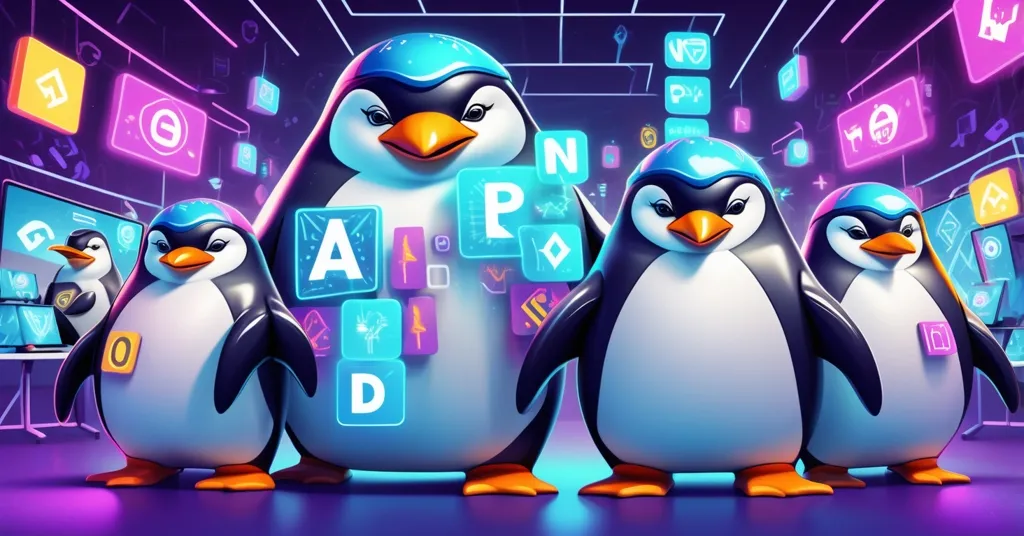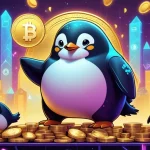Pudgy Penguins Denies OpenSea Acquisition as NFT Market Surges to $6.6B

Pudgy Penguins Shuts Down OpenSea Acquisition Rumors Amid NFT Market Revival
Rumors have been swirling across social media that Pudgy Penguins, the iconic NFT project with 8,888 unique flightless bird tokens, quietly acquired OpenSea, the heavyweight of NFT marketplaces. However, the project’s head of security has categorically denied these claims, redirecting focus to their ambitious partnerships and Web3 gaming ventures while the broader NFT market stages a striking comeback.
- Rumor Debunked: Pudgy Penguins confirms no acquisition of OpenSea, dismissing online speculation as unfounded.
- Strategic Moves: Emphasis on partnerships with Lufthansa and NASCAR, alongside a new skill-based game, Pengu Clash, on TON Blockchain.
- NFT Market Surge: Market cap hits $6.6 billion in July 2024, with trading volumes up 51%, driven by Ethereum giants like CryptoPunks.
Rumor Bust: No OpenSea Deal in Sight
The crypto rumor mill on platforms like X went into overdrive with whispers that Pudgy Penguins had snapped up OpenSea in a stealth deal. The speculation gained traction after comments from CEO Luca Netz in October 2024 hinted at interest in acquiring the marketplace, with some users pointing to vague platform updates and project announcements in December as supposed evidence. But Beau, head of security at Pudgy Penguins, took to X with a no-nonsense rebuttal to set the record straight.
“Pudgy Penguins didn’t buy OpenSea… chill.”
Beau went further, explaining that such a move doesn’t align with their current goals and urged the community to pivot to what’s really happening with the project.
“Talk about partnering with Lufthansa and NASCAR, and go find the next great brand for us to proliferate with.”
“I don’t actually think acquiring OS rn would make a lot of sense for us.”
This incident shines a harsh light on the misinformation plague in the crypto space. Unverified gossip, as seen in various Reddit threads about Pudgy Penguins and OpenSea, spreads like wildfire on X, often drowning out real progress. Frankly, it’s a damn shame that baseless chatter can steal the spotlight from tangible innovation. As a community, we’ve got to do better—stick to primary sources and stop feeding the hype beast with half-baked tweets.
Pudgy Penguins’ Empire-Building Playbook
For the uninitiated, Pudgy Penguins launched in July 2021 as a collection of 8,888 unique digital penguins on the Ethereum blockchain. Think of NFTs (non-fungible tokens) as one-of-a-kind digital collectibles—imagine owning a signed, first-edition book that can’t be duplicated, with the blockchain acting as a public ledger proving your ownership. While they rode the initial NFT craze to cultural stardom, market downturns forced a pivot. Their answer? Aggressively diversify into new territories.
Beyond digital assets, they’ve rolled out Pudgy Toys, physical merchandise in partnership with PMI Toys, bringing their quirky penguins into the real world. Through OverpassIP, NFT holders can license their penguin images for commercial use, earning a slice of the pie. Then there are high-profile partnerships with Lufthansa, the global airline, and NASCAR, the motorsport titan—moves that signal a push for mainstream relevance. But are these bridges to non-crypto audiences genuine adoption catalysts, or just flashy PR stunts? It’s worth questioning whether chasing corporate tie-ins risks diluting the decentralized ethos that drew many to NFTs in the first place, a concern echoed in discussions about the future of projects like Pudgy Penguins in the NFT space.
Perhaps their most intriguing play is Pengu Clash, a skill-based Web3 game launched on The Open Network (TON) Blockchain. Unlike Ethereum, where high gas fees—think of them as tolls on a busy highway—can deter users, TON offers scalability and dirt-cheap transactions, partly thanks to its ties to Telegram’s massive user base. Pengu Clash operates on a “play-to-win” model, distinct from the “play-to-earn” trend of early crypto games. As Luca Netz puts it, it’s about direct competition, and TON’s role is pivotal as explored in analyses of TON Blockchain’s impact on Web3 gaming.
“Play-to-win, in essence, is a skill-based game. Users wager against one another vs play-to-earn, [in which] you’re earning tradable currency that the game provides. This is a user-vs-user-based system.”
Picture it like a poker night where you bet against friends and win their chips, not a gig where the house pays you just for playing. This could lure non-crypto gamers who crave competition without complex tokenomics. Still, challenges loom—how will Pengu Clash stack up against established Web3 games? More critically, skill-based wagering treads a legal tightrope in some jurisdictions where it could be flagged as gambling. Regulatory scrutiny, especially from bodies like the SEC, could throw a wrench in these innovative models if they’re not carefully navigated.
NFT Market Rebound: Hype or Substance?
Zooming out, the NFT market is roaring back after a brutal slump. Data from DappRadar pegs the market cap at $6.6 billion in July 2024, a staggering 94% leap from the prior month. Weekly trading volumes jumped 51%, the strongest showing since February, as detailed in reports on recent NFT market trends and CryptoPunks’ floor price surge. Ethereum-based collections are leading the charge, with CryptoPunks, a cultural juggernaut, seeing their floor price—the lowest cost to snag one in the set—soar 53% to around $180,000 per NFT. On July 22 alone, that floor spiked 15.9% in 24 hours, with 83 new buys recorded. High-ticket sales, like Punk #5577 fetching $5.15 million, fuel the frenzy. As DappRadar analyst Sara Gherghelas noted, owning a Punk isn’t just financial—it’s a digital badge of honor trending hard right now.
Yet, let’s temper the excitement. At its 2021 peak, the NFT market cap neared $23 billion by some estimates, so we’re far from those dizzying heights. Plus, wash trading—fake transactions to inflate volume—and other manipulations still haunt this space. Is this rebound a sign of maturity, or just another speculative bubble with shinier graphics? Insights into NFT market recovery trends for 2024 suggest a mixed outlook worth considering.
Take CryptoBatz, an Ethereum NFT collection launched by rock legend Ozzy Osbourne in 2021. Following unconfirmed reports of his passing, its floor price rocketed 400%, with trading volume exploding 100,000% to $281,200 in a single day, as discussed in Reddit threads on CryptoBatz trading volume spikes. While still below its all-time high, this spike screams sentiment over substance. If a celebrity rumor can quadruple your portfolio overnight, are NFTs really the “future of art,” or just tabloid trading with blockchain bells? Until utility catches up with hype, these surges risk fizzling as fast as they ignite. (A quick note: mainstream confirmation of Osbourne’s death is pending, so approach this data with skepticism for now.)
Interestingly, Pudgy Penguins briefly outpaced CryptoPunks in seven-day trading volume, crossing $20 million before slipping to second place. Their market clout isn’t just rumor fodder—they’re a player in this revival, even if distraction from gossip overshadows their grind.
Bitcoin’s Shadow: Why Maximalists Should Care
As Bitcoin maximalists, we view BTC as the bedrock of this financial revolution—decentralized, censorship-resistant money embodying freedom and privacy. NFTs aren’t Bitcoin’s domain, but their market swings often mirror BTC’s price sentiment. When Bitcoin steadies or rallies, risk appetite for speculative assets like digital collectibles tends to spike. It’s a ripple effect across the crypto pond, even if Bitcoin itself stays out of the NFT game.
That said, let’s not pretend Bitcoin must do it all. Ethereum’s dominance in high-value NFTs, despite its costly transactions, proves its niche. TON’s low-fee scalability, bolstered by Telegram integration, could redefine Web3 gaming accessibility, much like Solana has tried with mixed success. Different chains solve different puzzles in this decentralized future—a diversity we should champion under the effective accelerationism (e/acc) banner, pushing disruption forward. Still, I’ll play devil’s advocate: does Pudgy Penguins’ pivot to mainstream branding and centralized partnerships stray from the anti-status-quo spirit Bitcoin embodies? It’s a tension worth wrestling with.
Regulatory Headwinds and Sustainability Questions
Beneath the optimism, dark clouds loom. NFTs and Web3 gaming face mounting regulatory scrutiny. The SEC has already eyed tokenomics in play-to-earn models as potential securities, and skill-based games like Pengu Clash could attract gambling law crackdowns in key markets. Pudgy Penguins’ diversification might buffer them, but the broader industry isn’t immune. A single ruling could kneecap unchecked growth, a reality we can’t ignore, especially as highlighted by sources like reports on Pudgy Penguins denying OpenSea acquisition rumors.
Then there’s sustainability. Sentiment-driven spikes like CryptoBatz expose the casino vibe still plaguing NFTs. Are we building lasting value, or just chasing the next pump-and-dump? Let’s be blunt: most price predictions and trade analyses flooding X are shameless shilling, preying on the naive. We’re here to drive adoption with integrity, not peddle fantasies. Pudgy Penguins seems to bet on utility with toys and games, but the market’s speculative undertow remains a beast to tame, a point reinforced by detailed fact-checking of Luca Netz’s statements on the OpenSea rumors.
What’s Next for Pudgy Penguins and NFTs?
Pudgy Penguins’ trajectory isn’t about a phantom acquisition—it’s about grit and reinvention in a volatile arena. Their forays into gaming and branding, set against an NFT market clawing back relevance, hint at an industry growing pains and potential in equal measure. As advocates of decentralization, we’re cheering for projects that rattle the cage with real value, not hot air. Bitcoin remains our guiding star, but Ethereum’s clout and TON’s scalability have roles in accelerating this financial upheaval. Let’s just hope the community learns to ditch rumor mills and double down on what’s being built. As this space speeds ahead, we must question everything—from billion-dollar surges to whispered deals.
Key Takeaways and Questions on Pudgy Penguins and NFTs
- What sparked the Pudgy Penguins and OpenSea acquisition rumor?
It stemmed from CEO Luca Netz’s October 2024 comments on possibly buying OpenSea, amplified by speculative X posts and misinterpreted updates by December. - Why did Pudgy Penguins reject the acquisition speculation?
Beau, head of security, called it false and strategically unfit, shifting focus to real wins like Lufthansa and NASCAR partnerships over marketplace grabs. - What new ventures is Pudgy Penguins tackling in 2024?
They’re rolling out Pudgy Toys, licensing via OverpassIP, and Pengu Clash, a skill-based Web3 game on TON Blockchain, prioritizing engagement over pure NFT speculation. - How robust is the NFT market recovery in July 2024?
Market cap reached $6.6 billion, up 94% from June, with trading volumes surging 51%, led by Ethereum’s CryptoPunks—though past peaks and manipulation risks urge caution. - Does the CryptoBatz surge signal lasting NFT value?
Unlikely—tied to unconfirmed Ozzy Osbourne news, its 400% floor price jump shows sentiment often trumps utility, risking short-lived bubbles. - How do Bitcoin trends tie into NFT market surges?
Bitcoin’s stability or rallies boost risk appetite for NFTs, reflecting broader crypto confidence, even if BTC isn’t directly linked to digital collectibles. - What hurdles face Pudgy Penguins’ Web3 gaming push?
Pengu Clash must rival established games and navigate legal gray areas around skill-based wagering, which could draw regulatory heat in major regions. - Why is TON Blockchain key for NFT and gaming projects?
TON’s low fees and scalability, enhanced by Telegram ties, offer a cost-effective alternative to Ethereum, potentially reshaping Web3 gaming accessibility.



